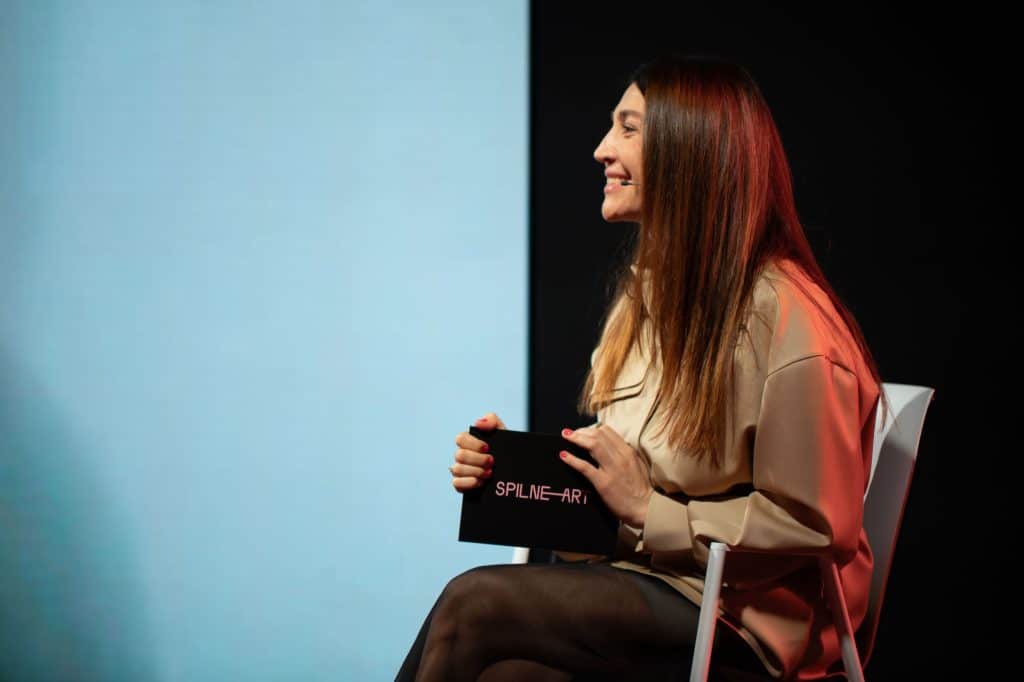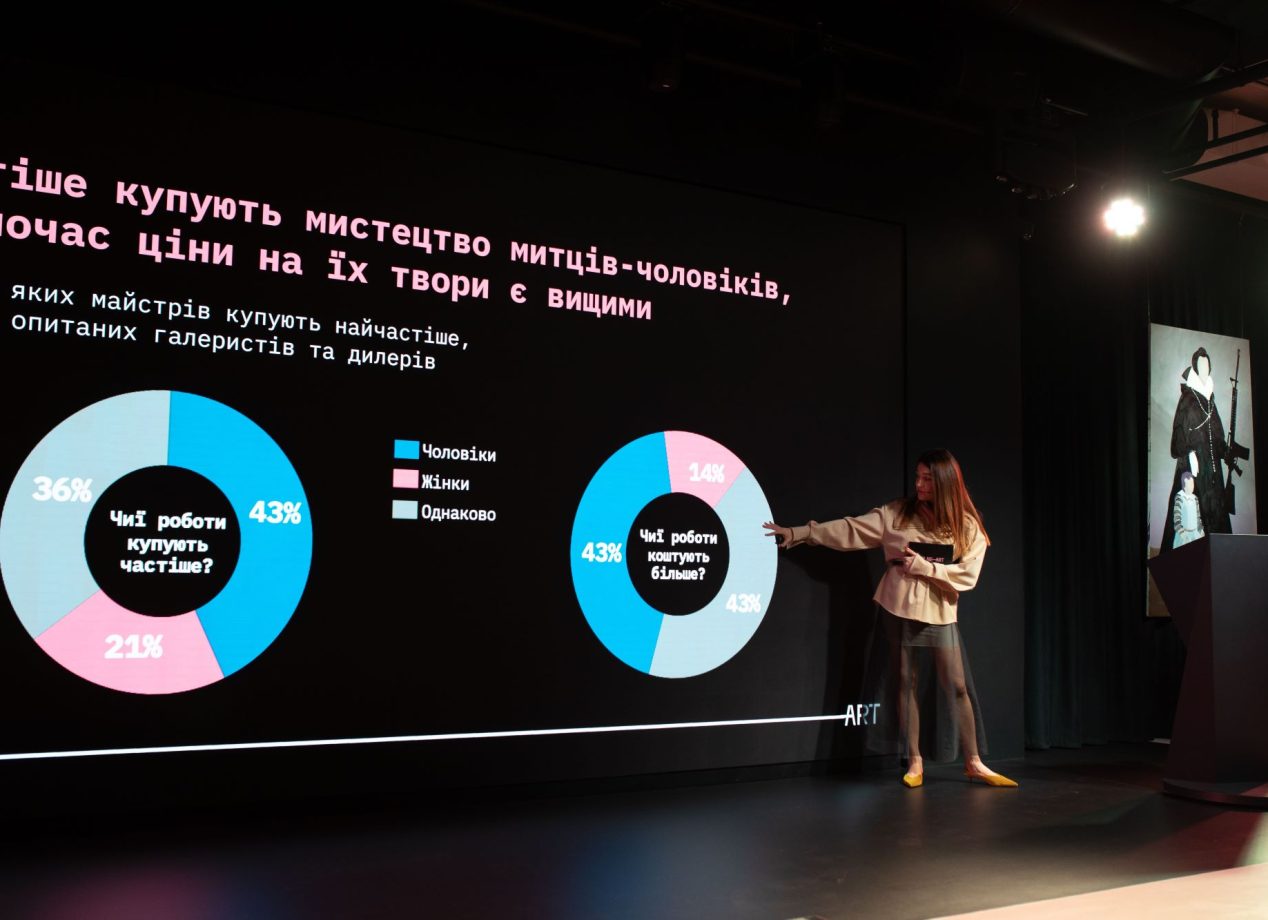Spilne Art, founded by Nataliia Tkachenko, spearheaded the first-ever market research on contemporary art in Ukraine. Following her recent conference in Kyiv aimed at positioning Ukrainian art globally, we had the opportunity to speak with Nataliia about her experience at Sotheby's Institute and the flexibility of online study.

Why did you choose to study online at Sotheby's Institute of Art and what course did you undertake?
Before starting a career in art, I had experience and education in finance. Due to a lack of education in the arts, I felt uncomfortable and unsure about taking steps in the gallery business. I decided that education would help me increase my confidence. I began searching for reputable educational institutions, and of course, Sotheby's Institute was on the shortlist. I planned to study in London, establish strong contacts, and build a network, as well as experience the spirit of the city. But in light of the pandemic, our offline plans collapsed and the course turned into an online format.
How did studying online fit into your schedule?
The course was quite intensive, but I skillfully maneuvered between work, family, and studies. During the study period, there was an active stage of the pandemic, and the company where I was working at the time - a metallurgical business, naturally slowed down its activities. This affected the workload, allowing me to concentrate more on my studies.
The online format of learning allowed me to balance work and education. The flexible schedule easily fit into my routine without altering it. The online format enabled people from all over the world - both classmates and lecturers - to participate in our classes. I believe without an offline format, we wouldn’t have had the speakers from various parts of Europe and US that we had.
What inspired you to establish Spline Art, and how did studying at Sotheby's Institute of Art contribute to this decision?
It is worth noting that when Spilne Art was created, there were very few galleries in Ukraine, most of which were quite conservative, closed, and, truly speaking, snobbish. Therefore, art had to be found outside of galleries - I visited artists’ studios or visited artists at home. I began to receive requests from many friends and fellows for help in finding and selecting art. I realized that we had a shortage of accessible and inclusive platforms for art appreciation and acquisition. There seemed to be a distance between artists and art lovers, many of them didn’t know where to find others and vice versa.
Spilne Art has become a bridge to overcome the distances, it finds the best works among young artists for business or art lovers. The idea of creating Spilne Art emerged almost simultaneously with the beginning of classes at the Institute. I remember how Leo Crane - our course leader, gave us the task to dream and make a presentation of ourselves in 5 years. At that time, I gave myself maximum freedom and nurtured a bunch of ambitious ideas. I remember that among other things, there was a dream to create something together with Jacquemus and to have collectors from Manhattan. We still haven't worked with the brand, but that exercise and the experience shared by lecturers and students gave me a broad vision and courage. Just three months later, I launched Spilne Art, nowadays we have collectors from Manhattan, but our dreams today are much bigger than that.
Could you tell us more about the conference you hosted in Kyiv?
The presentation of the Art Market Research in Ukraine 2021-2023 brought together key stakeholders of the Ukrainian art sector, international experts, government representatives, and the art community. For the first time in Ukraine, an analysis of the state of the art market was presented. Covering the period from 2021 to 2023, the analysis highlights key events, market trends, changes in demand and supply, as well as important achievements of Ukrainian artists at national and international levels.
The event not only served as a platform for discussing market analytics but also as a place for dialogue among artists, collectors, gallery owners, and other stakeholders of the art sphere. Among the invited speakers were representatives of international authoritative cultural institutions such as Sotheby's Institute and TEFAF, as well as Ukrainian experts who shared their views on the development of the art market, legislative regulation in the field of art, and cultural policy.
As part of the event, a charity auction was held featuring works by leading Ukrainian artists such as Pavlo Makov, Zhanna Kadyrova, Roma Mikhaylov, and Kinder Album. The auction raised nearly $20,000 for the equipment for UA army and blood clotting devices for military medics.
What prompted you to initiate the market research on contemporary art in Ukraine, and what were your main findings?
Often I've heard the thesis that there is no art market in Ukraine. I agree that there isn't an art market in the form we used to experience it in reports like Art Basel's and Artnet's. But Ukrainian art is being sold, Ukrainian art is being bought, and in the past 2 years, a record number of exhibitions have been held in Ukraine. Ukrainian galleries are actively participating in art fairs and opening spaces abroad. Yes, we lack a healthy legislative framework of the art industry and coordinated rules, but we have everything to build a healthy art market from the underdeveloped market that has just begun its development path. Data collection and dialogue among different stakeholders and the government are a good start and a guarantee of success. We dared to say that the market exists, we identified trends - a rise in prices of Ukrainian art, nearly 1.5 times increase in sales over the last 2 years, a significant (70%) increase in the presence of major galleries abroad.
What role do you see Spline Art playing in bridging the gap between artists and art specialists in Ukraine?
We see our role wider than bridging the gap between artists and art specialists. We try to connect artists and businesses, art industry and the government, artists and collectors, Ukrainian art sector and international art sector. Nowadays we see our role beyond exhibitions and art sales. Cultural diplomacy, education, mediation between art sector and government, art and business collaborations, creation of public collection and promotion of independent art institutions - is not an exhaustive list of our activities. We are currently actively working on expanding the team, searching for relevant expertise, as well as building partnerships with institutions and businesses in Ukraine and abroad.
What advice would you give to aspiring entrepreneurs looking to enter the art world?
I would advise future entrepreneurs in the art industry the same as businessmen in any other industry:
- The core value of the business is the team.
- Choose people primarily based on values, then on experience and skills.
- Build everything from the start as if your company has already been on the market for 5 years. Well-functioning CRM, project management, motivation system, and financial analysis will sustain your company whether it’s 2 people or 200.
- Separate owner’s money from the company’s and pay yourself a salary.
- If you start a business with a partner, sign a partnership agreement.
- Remember that small projects consume almost as many resources as large ones. So be ambitious and aim for the big ones.
As for advice specifically in the art sphere:
- Artists and collectors require 100% of your attention. At all levels, both business and personal, you must be a service provider, an advisor, and a friend.
- And fear nothing! This will be challenging, yet interesting and meaningful.
